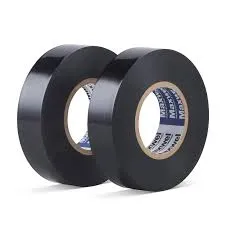The Benefits of Foam Weather Stripping for Windows
As the seasons change, homeowners often find themselves grappling with an age-old problem how to keep their homes comfortable while managing energy costs. One effective solution lies in foam weather stripping for windows. This type of insulation not only enhances energy efficiency but also improves the overall comfort of your living space. In this article, we will explore the benefits, types, and installation tips for foam weather stripping for windows.
Understanding Weather Stripping
Weather stripping is a material applied to the edges of doors and windows to create a seal that prevents air leaks. It helps to keep warm air inside during winter and block out hot air during summer. Foam weather stripping, specifically, is made from materials like polyethylene or rubber and comes in various thicknesses and widths, making it a versatile choice for different types of windows.
Benefits of Foam Weather Stripping
1. Energy Efficiency One of the primary advantages of foam weather stripping is its ability to reduce energy consumption. By sealing gaps and cracks around windows, it minimizes drafts and prevents conditioned air from escaping. This leads to a more stable indoor temperature and reduces the need for heating and cooling systems to work overtime, directly translating into lower energy bills.
2. Easy Installation Foam weather stripping is user-friendly and typically comes with a self-adhesive backing. This means homeowners can easily measure, cut, and apply the material without requiring professional help. A simple DIY project can lead to significant cost savings in the long run.
3. Improved Comfort Beyond energy efficiency, foam weather stripping contributes to overall comfort. By eliminating drafts, it creates a more consistent temperature throughout your home. This is particularly vital in rooms that tend to be colder or hotter than others, ensuring a pleasant living environment year-round.
4. Noise Reduction Foam weather stripping can also help dampen outside noise, providing a quieter indoor living space. Whether it’s traffic sounds or the chatter of neighbors, a well-sealed window can significantly reduce unwanted disturbances.
5. Moisture Prevention High-quality foam weather stripping can assist in preventing moisture infiltration, which can lead to mold and mildew problems over time. By sealing windows effectively, homeowners can protect their indoor air quality and maintain a healthier environment.
Types of Foam Weather Stripping
There are several types of foam weather stripping available, allowing homeowners to choose the most suitable option for their needs
foam weather stripping windows

1. Open-cell Foam This type is softer and more flexible, making it ideal for irregular gaps. It compresses easily and provides a good seal, though it may not be as durable as closed-cell options.
2. Closed-cell Foam Denser and more resilient, closed-cell foam offers superior insulation and moisture resistance. It is an excellent choice for areas exposed to extreme weather conditions.
3. Adhesive Backed Foam Most commonly used for DIY projects, this foam has a sticky backing for easy application. Simply peel and stick to the desired area, ensuring a quick and hassle-free installation.
Installation Tips
To install foam weather stripping effectively, follow these simple steps
1. Clean the Surface Ensure that the window frame is clean and dry before applying the foam. This will help the adhesive bond better and provide a longer-lasting seal.
2. Measure and Cut Measure the length of the areas you wish to seal, and cut the foam to size using sharp scissors or a utility knife.
3. Apply Firmly Peel the backing off the foam and press it firmly into place, ensuring there are no gaps or air pockets.
4. Test the Seal Once installed, check for any remaining drafts by running your hand along the edges. If you still feel air leaks, consider adding another layer or adjusting the position of the foam.
Conclusion
Foam weather stripping for windows is an effective, affordable solution for enhancing home comfort and energy efficiency. By sealing the gaps, homeowners can enjoy a more tranquil, climate-controlled environment while reducing energy costs. Whether opting for a DIY approach or seeking assistance, investing in foam weather stripping is a step toward a more comfortable home.
-
XIANGFAN Rubber Tape-Ultimate Solutions for All Your Insulation NeedsNewsJun.24,2025
-
XIANGFAN Rubber Tape-Protection for Industrial and Residential ApplicationsNewsJun.24,2025
-
XIANGFAN Rubber Tape: Superior Safety and Sealing for Demanding EnvironmentsNewsJun.24,2025
-
XIANGFAN Rubber Tape: Reliable Solutions for Every Electrical ChallengeNewsJun.24,2025
-
XIANGFAN Electrical & Industrial Tape: Powering Reliability Across IndustriesNewsJun.24,2025
-
XIANGFAN Electrical & Industrial Tape: Excellence in Every ApplicationNewsJun.24,2025
